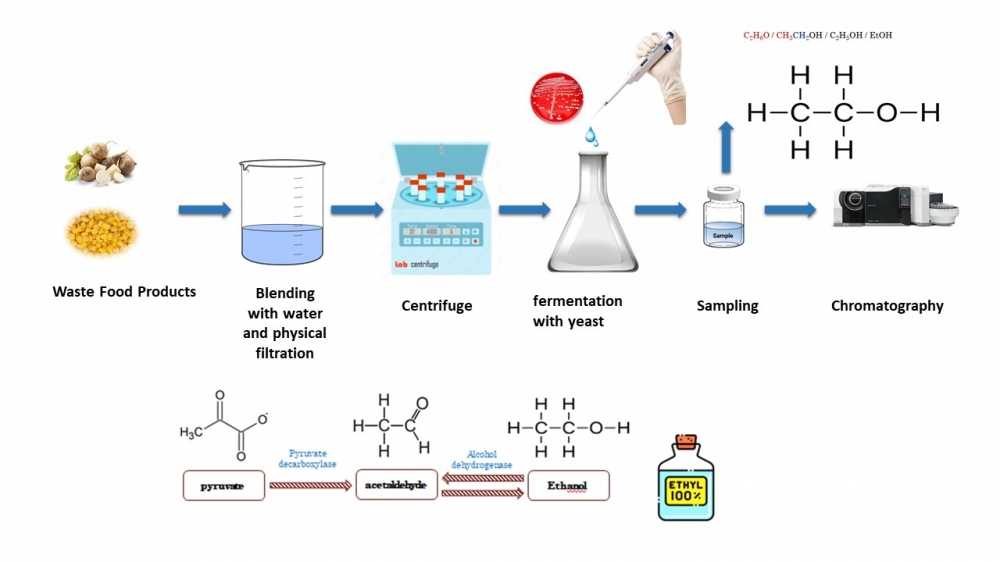JOURNAL 3084
Records of Agricultural and Food Chemistry
Year: 2024 Issue: 3 Special Issue: Abstracts 3rd. TCS, International Food Chemistry Congress February 29-March 03,2024 Antalya Türkiye
p.64 - 64
Viewed 1056 times.
GRAPHICAL ABSTRACT

ABSTRACT
Ethanol is commonly used as an industrial raw material in various fields such as food, medicine, and pharmacy [1]. Chemically, ethanol and bioethanol are the same molecules. The term bioethanol is used in the literature to indicate ethanol obtained biologically from biomass, as opposed to synthetically from fossil fuels [2]. Ethanol is a colorless, highly flammable liquid fuel that mixes well with water and gasoline [3]. Bioethanol can be used as a pure gasoline substitute or mixed with gasoline. It has been reported that many microorganisms, including bacteria, yeasts, and filamentous fungi, can ferment lignocellulosic hydrolysates to produce ethanol. Among them, E. coli, Zymomonas mobilis, S. cerevisiae, and Pichia stipitis are the most relevant ones for lignocellulosic ethanol bioprocesses. These microorganisms have different natural properties that can be considered as advantageous or disadvantageous in ethanol production processes from lignocellulosic biomass [4]. Saccharomyces cerevisiae is the most preferred producer of bioethanol, as it can work in a wide pH range and is resistant to mutation. Since agricultural and industrial wastes reduce the cost of raw material in fermentation processes, many studies have focused on using these substrates as potential for bioethanol production. Like in most biotechnological processes, researchers have investigated ethanol production using various regional agricultural products and waste to reduce product costs and also to produce high-value-added products from waste. This presentation will explore resarch focused on obtaining high-value ethanol from various wastes.
KEYWORDS- Bioethanol
- boethanol production
- food waste
- Saccharomyces cerevisiae